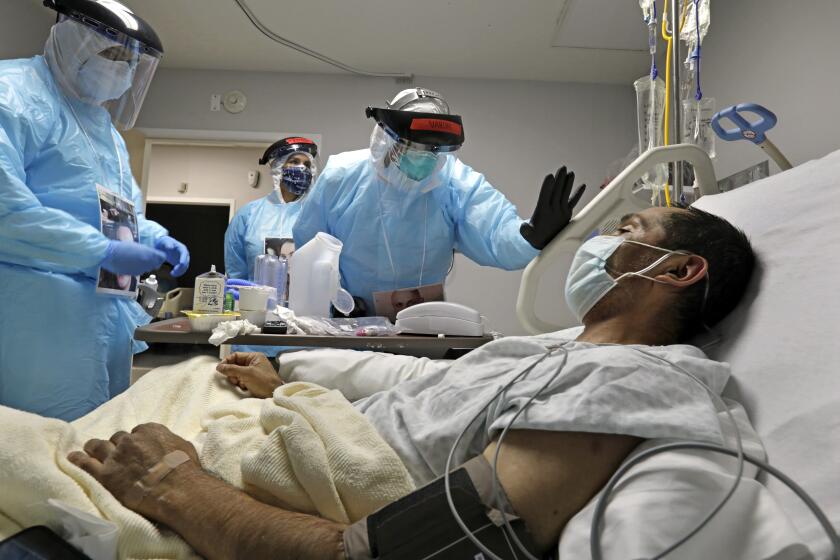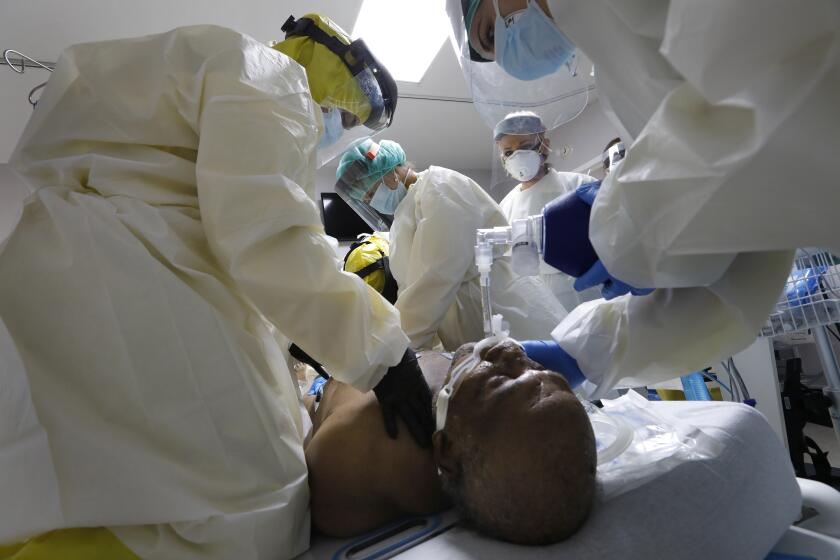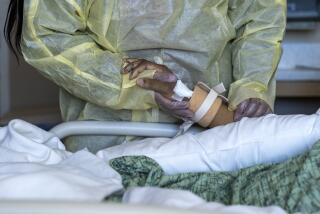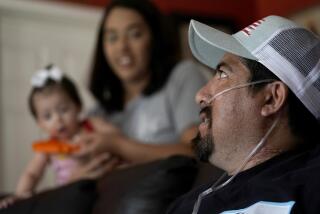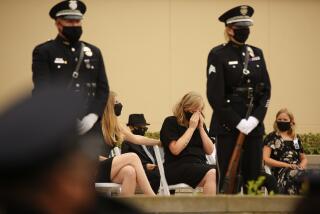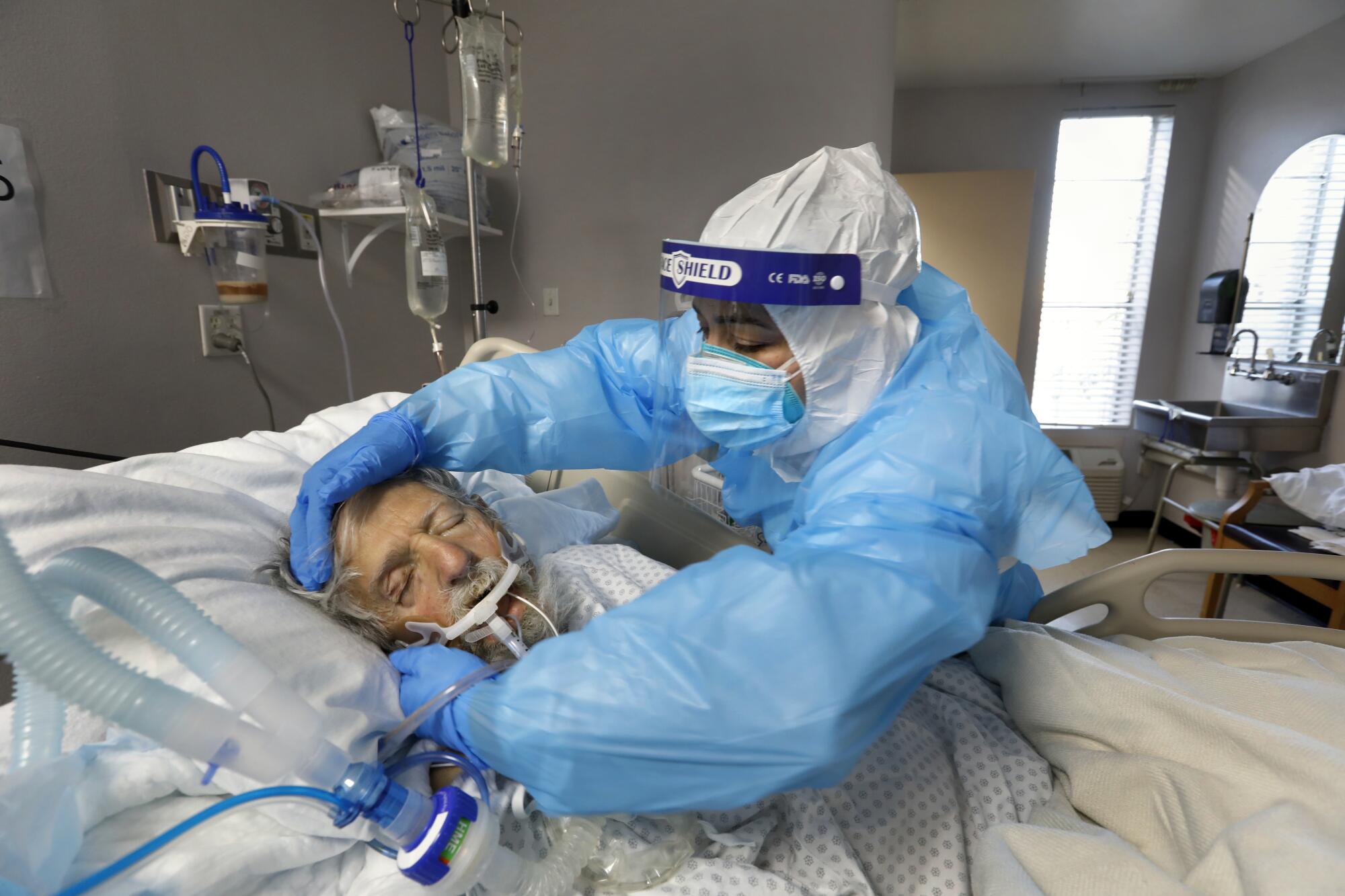
- Share via
HOUSTON — After checking on one of her patients, Flor Treviño was about to duck through a zippered plastic door when a flurry of beeping monitors turned her around.
“Get the crash cart!” shouted another nurse on the COVID-19 ward.
Treviño rushed into room 418, where nurses were pumping away on a man’s bare chest.
“Let’s check for a pulse,” a medical student instructed.
There was none.
The 79-year-old rancher was bleeding internally. A nurse stepped into the corridor to call his relatives in New Mexico.
“The family wants us to continue — do whatever we can!” she yelled.
Treviño grabbed three syringes of epinephrine and emptied them into the man’s IV to jump-start his heart. But nothing worked.
“You want to call it?” the medical student asked the team, which agreed the battle was over. “He’s dead at 9:13.”
The room began to empty as quickly as it had filled. Treviño stayed to help the teary nurse who had been taking care of the man.
Together, the two nurses disconnected the man from IVs and monitors, cleaned his skin with disposable wipes and wrapped his head with a cotton pad.
Then they eased him into a white body bag.
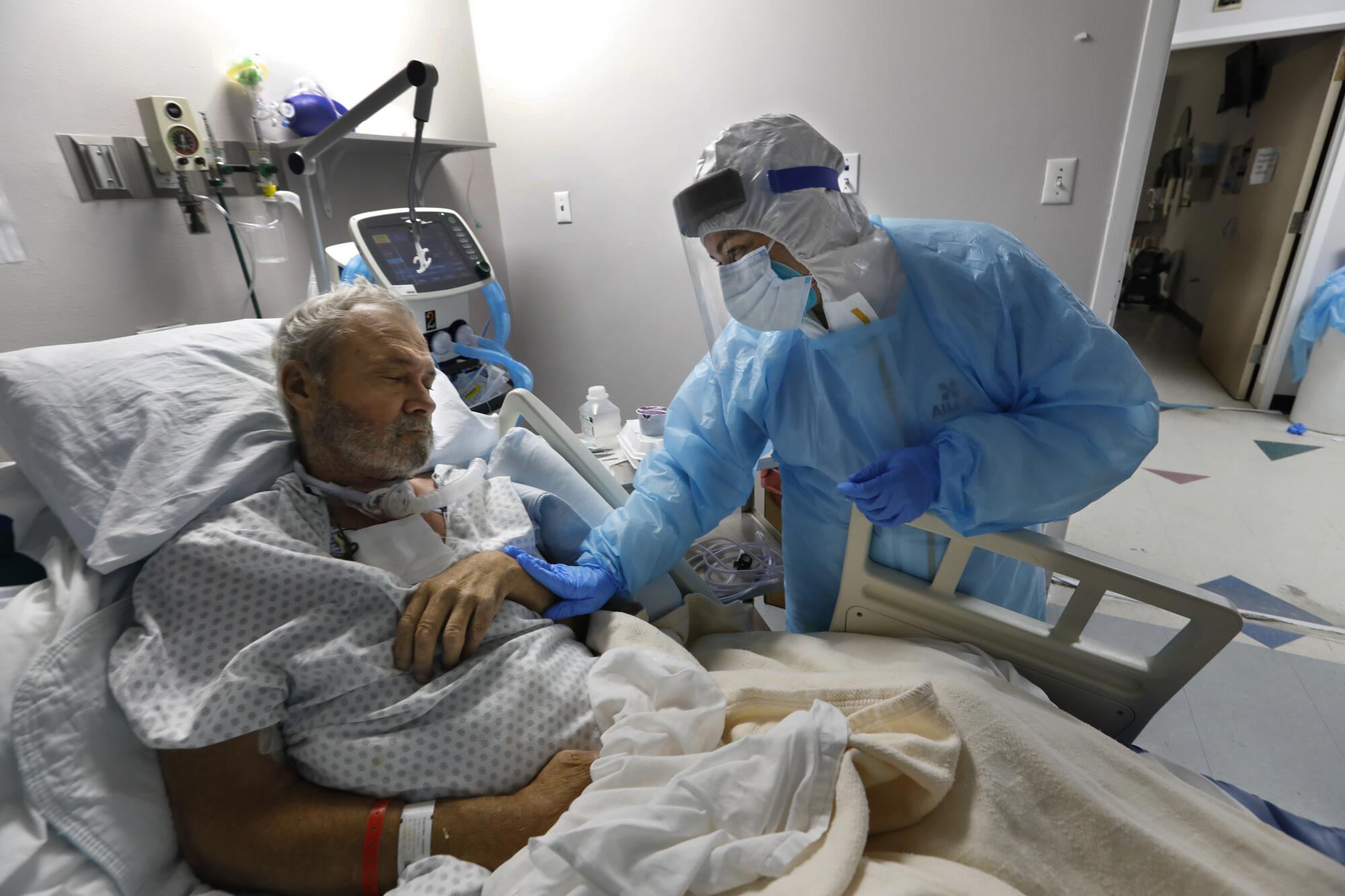
It was Day 264 at United Memorial Medical Center in Houston.
The number — marking how much time had passed since the first coronavirus patient showed up back in March — was written on a sign at the nurse’s station and updated daily.
When the pandemic started, Treviño was working in the ICU and avoided the COVID-19 unit. Nurses there received hazard pay, but she didn’t believe it was worth the risk of catching the virus and bringing it home to her family.
Then in April her former charge nurse in the ICU asked for her help.
“I couldn’t say no,” she said.
She called a family meeting. At the kitchen table, Treviño, 40, explained her decision to her husband and their three teenagers.
Her husband, Jose, 44, a flooring company supervisor, learned not to ask about her shifts, which began before dawn and ended well past dusk.
Once nurses enter the COVID-19 ward, they often feel as isolated as their patients and have to be constantly vigilant, enveloped in face shields, protective suits, masks, gloves and shoe covers.
People come in walking and talking and in a few days, they die. It’s just so emotionally and physically draining.
— Flor Treviño
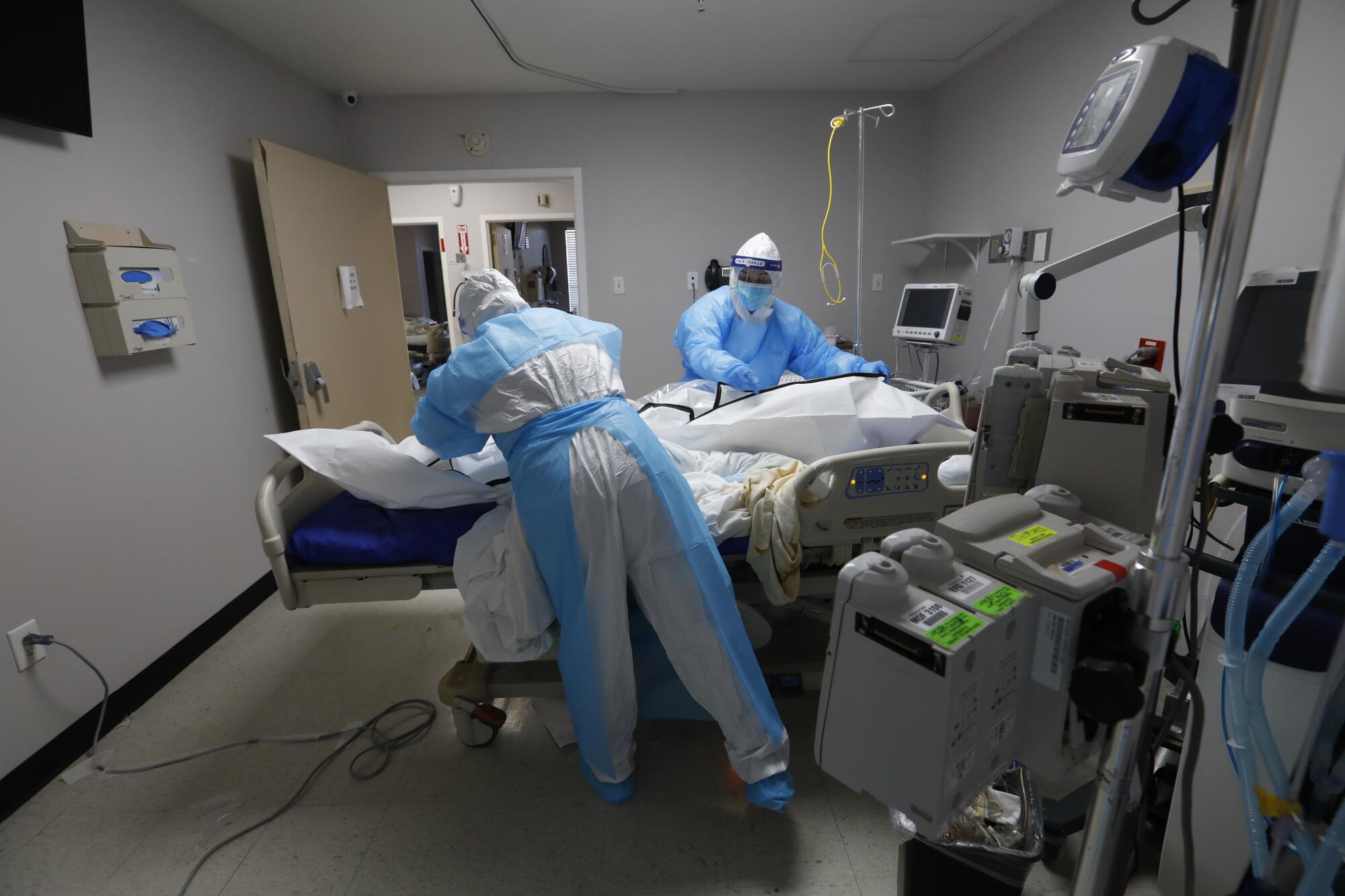
Treviño grew to miss the sun, which she only glimpsed in the break room or through patients’ narrow windows, though on her days off, its brightness stunned her.
She had nightmares about beeping monitors.
“People come in walking and talking and in a few days, they die,” she explained. “It’s just so emotionally and physically draining.”
As infections surge nationwide, hospitals in Texas and two dozen other states have reported severe shortages of nurses. Treviño’s hospital relies on nurses sent by the state from elsewhere in Texas, as well as traveling nurses from other parts of the country.
The COVID-19 nurses are a skeleton crew without assistants. They shoulder the brunt of cleaning, feeding, moving and monitoring patients who have been arriving sicker than at the start of the pandemic.
Treviño has helped clean more than 20 dead bodies.
“I initially thought it would stress me out to be so out of control,” she said. “Now I just go with the flow.”
***
There were 33 patients on the COVID-19 unit on Day 264 — a balmy Tuesday, the 8th of December — ranging in age from 20 to 91.
Treviño on occasion had been assigned as many as six patients at a time. Today she was one of nine nurses working the 12-hour day shift and had two of the sickest.

George Thomas, a 75-year-old physician from Beaumont, was in room 415. He had arrived with pneumonia a week earlier on a ventilator. Efforts to get him breathing on his own had failed.
At 11 a.m., after phoning Thomas’ wife and 22-year-old daughter with an update, Treviño checked his blood pressure, which had dropped.
She makes a point of speaking to her patients, even if they are unconscious.
“I’m going to suction you a little,” she explained in a gentle voice.
The frail, bearded man’s eyes were closed, his body limp in her arms as she used a vacuuming wand to clean his mouth. Treviño detected small frown lines in his forehead and a faint grimace around his lips, which she took as a sign that he could hear her.
“I know it’s uncomfortable,” she said. “I’m sorry.”
Because Thomas was a doctor — one who had treated COVID-19 patients himself — Treviño felt comfortable whispering medical details in his ear.
Using the leg of her disposable suit like scrap paper, she jotted notes about his medications and vital signs. At 5 feet 2 inches, she had to stretch to adjust his IV bags.
“I talked to your wife,” she said. “She’s praying you get better.”
Treviño moved next door to room 417.
After weeks on a ventilator, Charles Fletcher, a 60-year-old roofer from Houston, was finally getting better.
But he still had a hole in his neck, fitted with a breathing tube that made it difficult to speak.
“When can I have real food?” he mouthed.
He was on a liquid diet, but Treviño promised to feed him.
“How bad was my situation?”
“You were very critical,” Treviño said. “You had a machine that was breathing for you.”
Fletcher nodded his shaggy gray head. From his bed, he couldn’t see across the hall, where the 79-year-old man’s body still rested, ready to be picked up by a funeral home.
Treviño spooned green Jell-O into her patient’s mouth. Next, she held a plastic cup of grape juice to his lips. Fletcher took a few eager sips, then started coughing and had to stop.

It was approaching 1:30 p.m. when Treviño stripped off a layer of protective gear and headed to the break room for a quick lunch.
She’d brought leftover chicken and potatoes, but without much time, she grabbed an energy bar instead and plopped down in a chair. Her feet started throbbing in her gray sneakers.
Gathered around a table, several nurses were chatting about the virus. One of their colleagues had just been admitted to the COVID-19 unit for the second time.
“You feel like you’re going to die on a day-to-day basis,” said a nurse from San Antonio who had survived her own bout with the virus.
She treated herself at home — even inserting her own IV — unlike a less fortunate colleague who spent five days as a patient on the COVID-19 ward.
That nurse suspected she contracted the virus when she didn’t tighten her mask enough before aiding a dying patient.
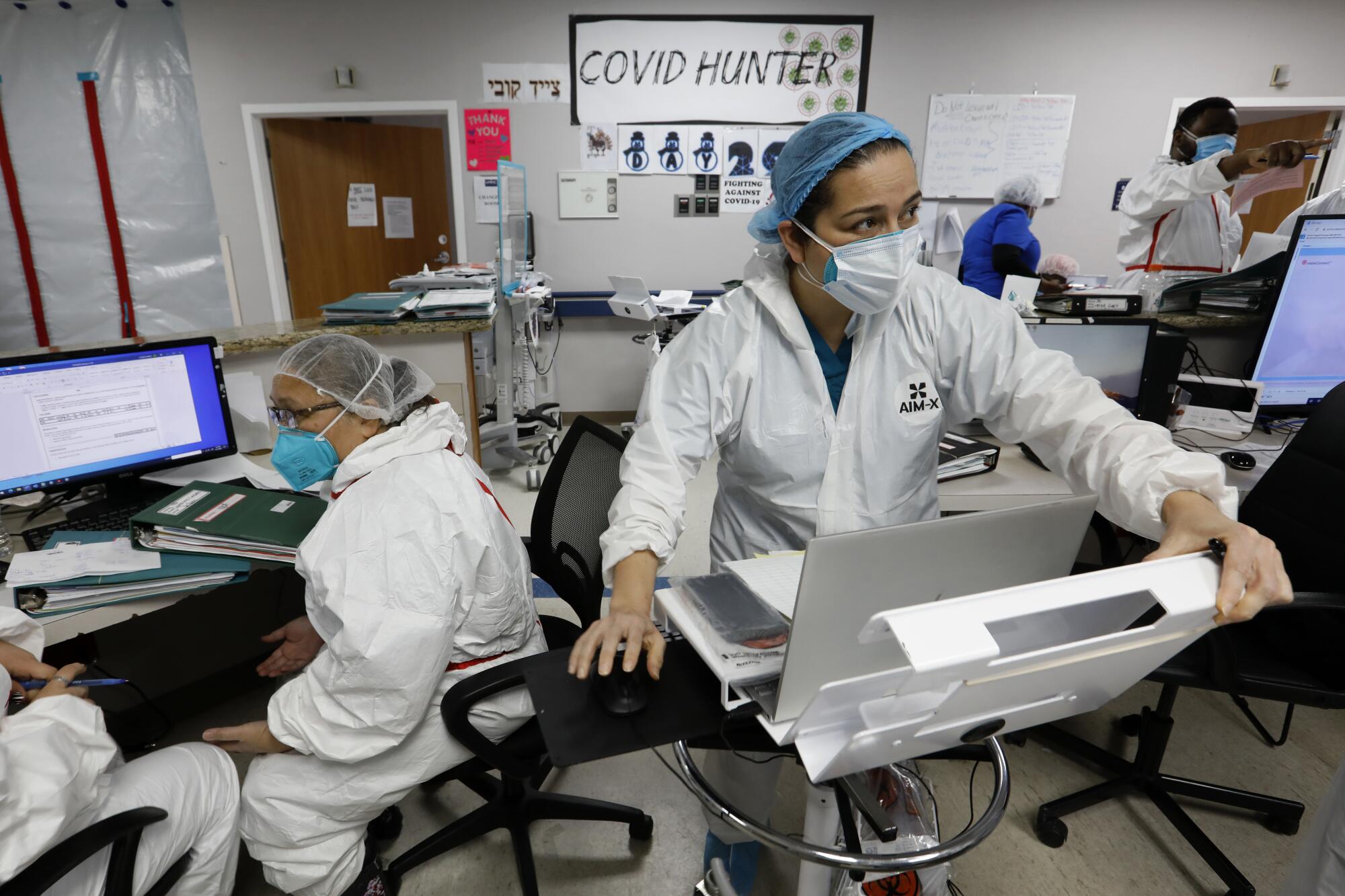
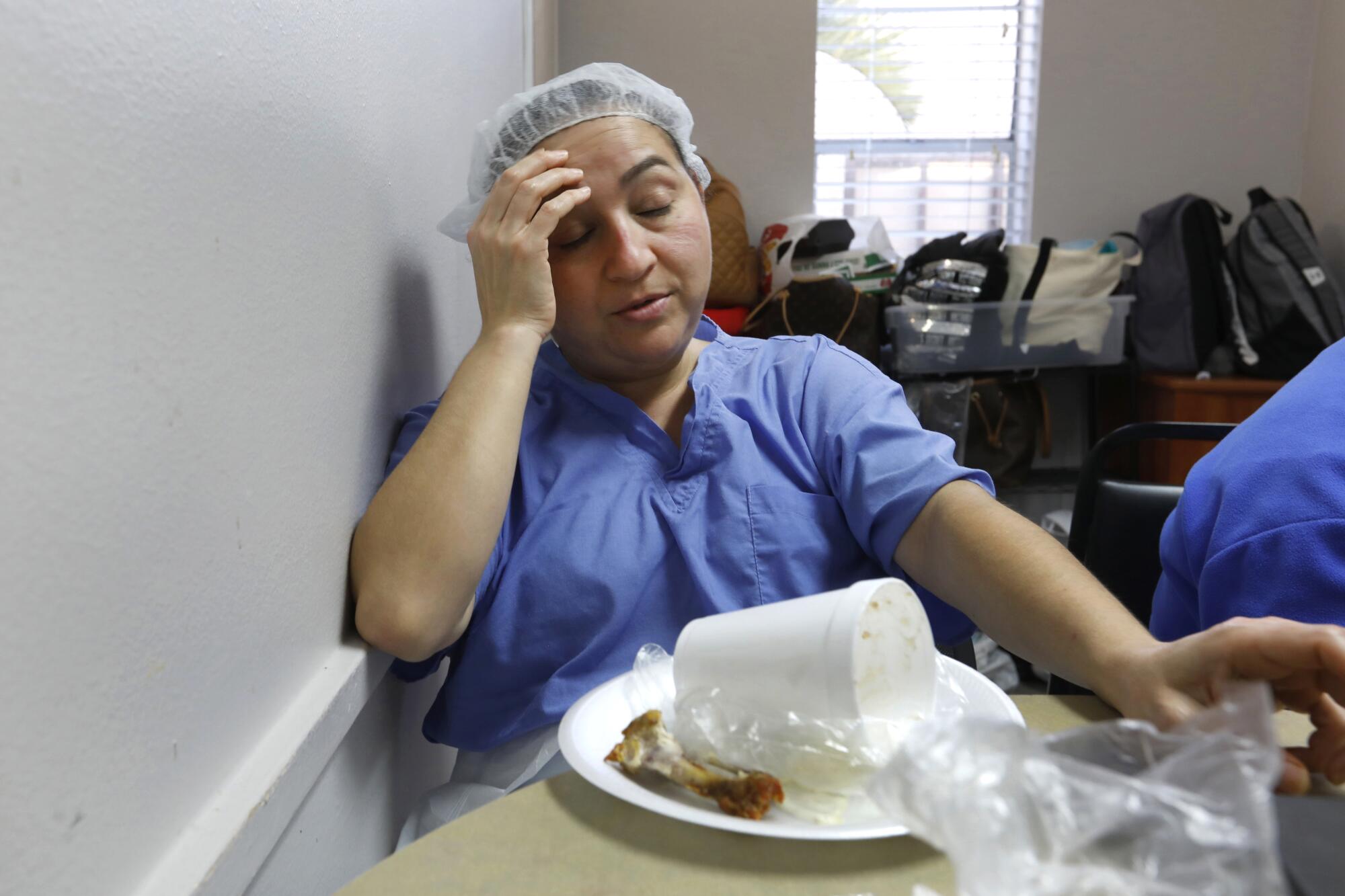
Treviño’s former ICU charge nurse, the one who persuaded her to join the unit, said her husband had a heart condition and was scared he would catch the virus from her.
“Do you tell him stories?” Treviño asked.
The veteran nurse said she doesn’t talk about work at home.
“Me either,” Treviño said. “Why pass on that trauma?”
Still, Treviño — the first in her family to graduate from college — said she felt an obligation to warn her family about the virus.
Her in-laws live with her. Her 55-year-old brother-in-law, who lives down the street, tested positive this month — days after visiting her house. Her husband always wore a mask at work, but his co-workers didn’t. Her 17-year-old daughter taught at a preschool and was preparing to return to in-person college classes.
Relatives with diabetes and high blood pressure were eager to gather for the holidays, and Treviño was struggling over whether to cancel her annual tamale-making party.
“They don’t see what I do,” she said. “I don’t know how to convey it.”
She recently had her own scare.
In late November, she went to the emergency room with chest pains. It turned out to be muscular, possibly from lifting patients.
“You never want to call in sick,” she said.
She left the break room after 15 minutes and suited up again. She would grab something else to eat later.
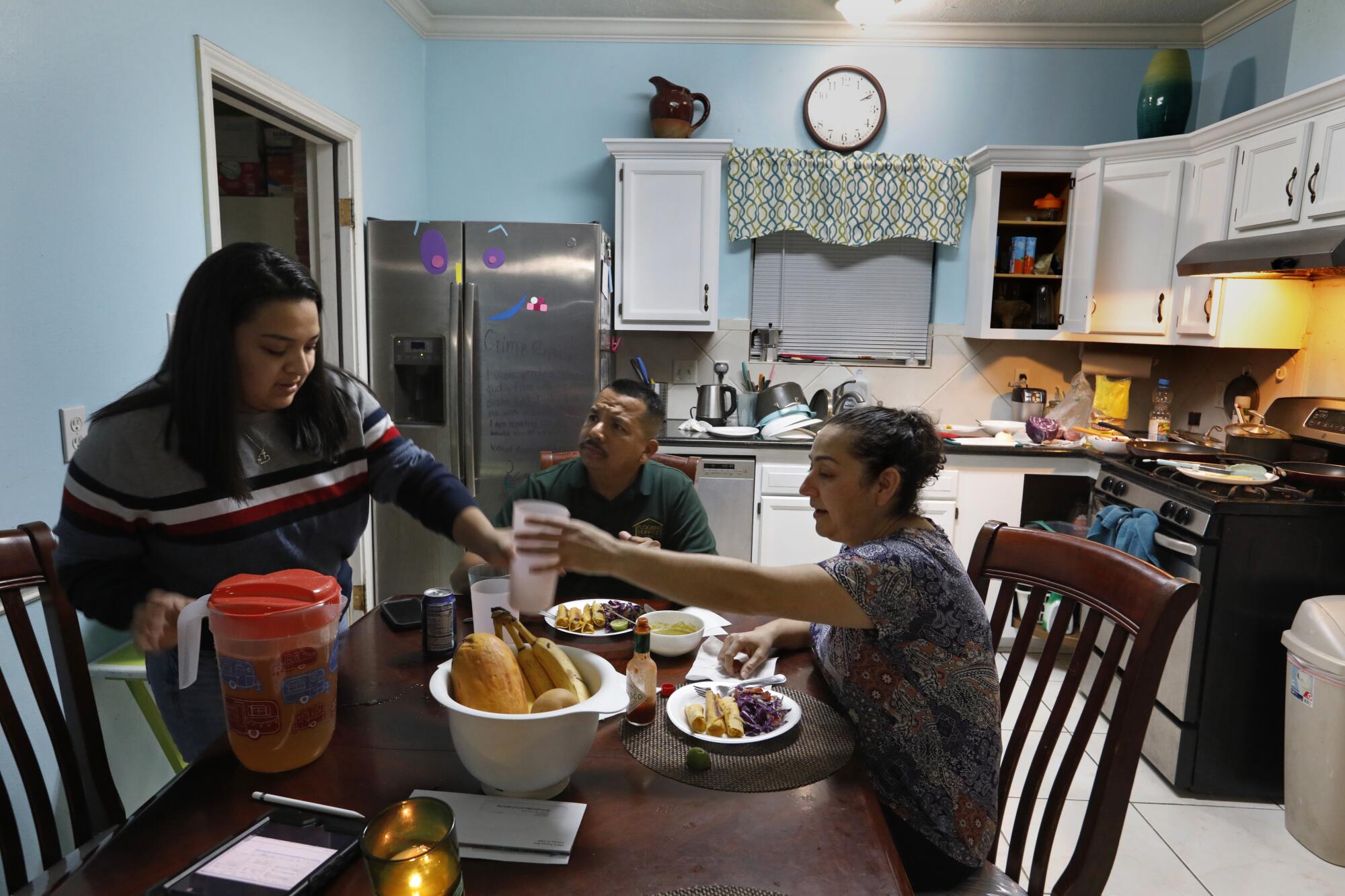
Things were quieting down by 6:30 p.m. as Treviño neared the end of her shift on Day 264.
She told Fletcher that she wouldn’t see him again for more than a week — after a much-needed vacation at a cabin with her husband to celebrate their 21st anniversary.
She was still saying her goodbyes when the unit’s doors burst open.
“Patient coming through!” nurses hollered as they wheeled a gurney into the unit.
It held a 62-year-old woman who had been treated in the emergency room for a drug overdose and then diagnosed with COVID-19.
Another patient was expected to arrive soon from Louisiana by helicopter. A third was coming from a hospital east of Houston.
Treviño got caught up helping the other nurses and didn’t leave the unit until just after 8 p.m., more than an hour after her shift officially ended.
In an anteroom just outside the zippered doors, she shed her protective gear and scrubs soaked with sweat. She emerged from the shower with her damp black curls loose.
Treviño was eager to get home. She would change shoes in the car, slipping on a fresh pair of sandals, and be greeted at the front gate by her husky mix puppy, Milo. Inside, holiday music would be playing from a tablet as the family Christmas tree sparkled in a corner.
But she still had two hours of paperwork. She retreated to an empty post-operative unit where she used to work.
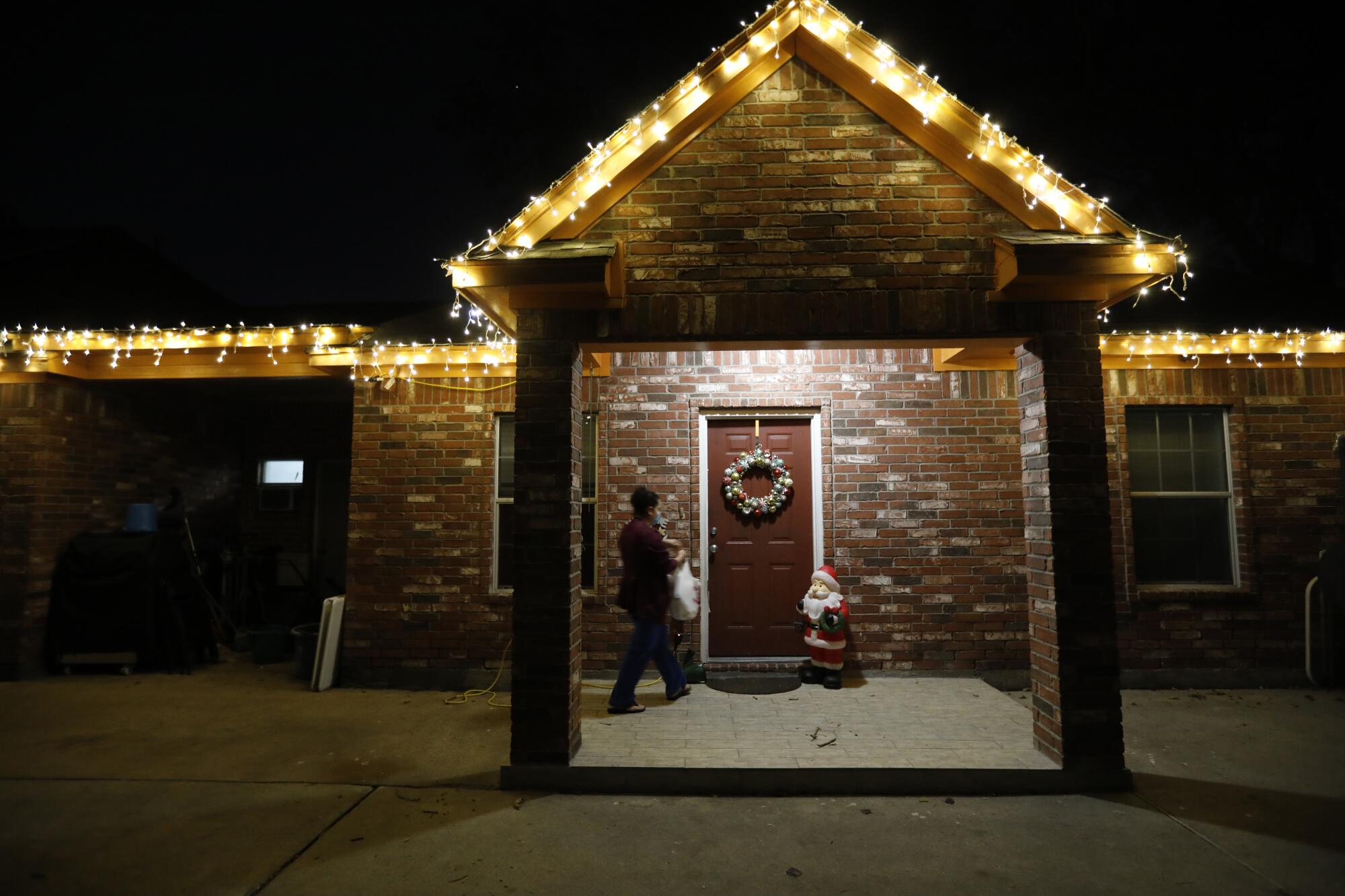
Treviño rubbed her ears, sore from being mashed down under her mask all day. The bridge of her nose had been rubbed raw. She would have to smear Vaseline on it before bed. Her mind was just starting to process emotions set aside during her busy shift.
She thought about the man who had died that morning. Losing a patient was the hardest part of her job in the ICU. But on the COVID unit, sometimes death felt like mercy.
At least her two patients were doing well, she thought. The doctor had said that Fletcher would soon be ready to leave the unit. Thomas’ blood pressure had stabilized.
She would be on vacation four days later when his blood oxygen levels plummeted and his heart stopped.
“That’s the thing with this unit: You can’t get too optimistic as staff members,” Treviño said after hearing the news. “They can be OK one day and things change really, really quickly.”
She returned to work on Saturday, Day 275.
A Houston hospital isn’t just battling the coronavirus. It faces patients who, convinced they’re not infected, leave before treatment is finished.
This Houston hospital tried to prepare for the second wave of COVID-19, but was already 80% full this week as a nurse and doctor fell ill.
More to Read
Sign up for Essential California
The most important California stories and recommendations in your inbox every morning.
You may occasionally receive promotional content from the Los Angeles Times.

